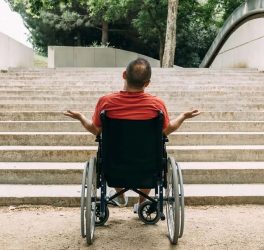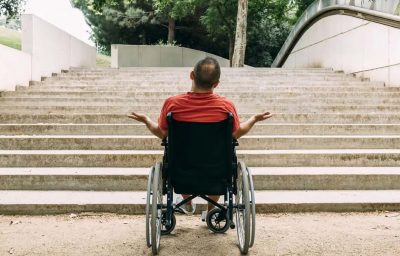
A team of researchers identified nine meaningful reasons that prevent people with disabilities from seeking employment. Their findings provide a much-needed understanding of this population’s motives for remaining unemployed, which can inform programs and policies that promote labor force participation of people with disabilities.
The article, “Understanding Persons with Disabilities’ Reasons for Not Seeking Employment” was published in Rehabilitation Counseling Bulletin on April 15, 2021.
The authors are Denise C. Fyffe, PhD, Anthony H. Lequerica, PhD, and John O’Neill, PhD, of Kessler Foundation; Courtney Ward-Sutton, PhD, and Natalie F. Williams, PhD, of Langston University; and Vidya Sundar, OT, PhD, of the University of New Hampshire. Drs. Fyffe, Lequerica, and O’Neill also have academic appointments in the Department of Physical Medicine and Rehabilitation at Rutgers New Jersey Medical School.
In 2016, just 26 percent of people with disabilities were employed, versus 72 percent of people without a disability. Unraveling the socioeconomic, medical, and personal reasons for the chronic low employment rate among people with disabilities is a difficult task, in part because there is a scarcity of studies utilizing a nationally representative sample that includes narrative data. However, learning why people living with disabilities are not seeking or returning to work is critical to developing targeted employment interventions.
To gain a more precise understanding of unemployment among people with disabilities, a team of researchers analyzed responses to an open-ended question about employment from 3,013 participants in the 2015 Kessler Foundation National Employment and Disability Survey, the first nationally validated survey of the work experiences and perspectives of individuals with disabilities. The participants were adults of working age (18 to 64), representing 50 states and the District of Columbia. The majority identified as striving to work, defined as working, actively preparing for employment, searching for jobs, seeking more hours, or overcoming barriers to finding and maintaining employment. This analysis focused on 1,254 respondents who self-identified as being unemployed or not seeking employment and having one or more disabilities.
The results revealed a broad range of meaningful reasons why people with disabilities did not see themselves working in the near future. The most common reasons for not striving to work related to their perceptions about their medical conditions, functional limitations, or disability, which contributed to concerns about being able to find and keep a job. Other common responses cited problems related to bodily functioning and health issues, household responsibilities and educational conflicts, fear of losing disability benefits, and concerns about workplace culture, accessibility, and acceptance.
Participants’ reasons for opting not to work differed across demographic and sociodemographic characteristics, pointing to the pitfalls in relying on such characteristics as the framework for employment strategies rather than focusing on the underlying reasons for not striving to join the workforce.
Countering negative perceptions, which are often associated with diverse demographic and sociodemographic characteristics, is essential to developing successful return-to-work or employment interventions, according to lead author Dr. Fyffe, senior research scientist in the Centers for Spinal Cord Injury Research and Outcomes & Assessment Research at Kessler Foundation. “Our results are important,” asserted Dr. Fyffe, “because they empower rehabilitation counselors, policy makers, and families to support, set, and manage realistic employment goals while encouraging sensitivity to the negative perceptions that people hold about their illness or return to work.”








